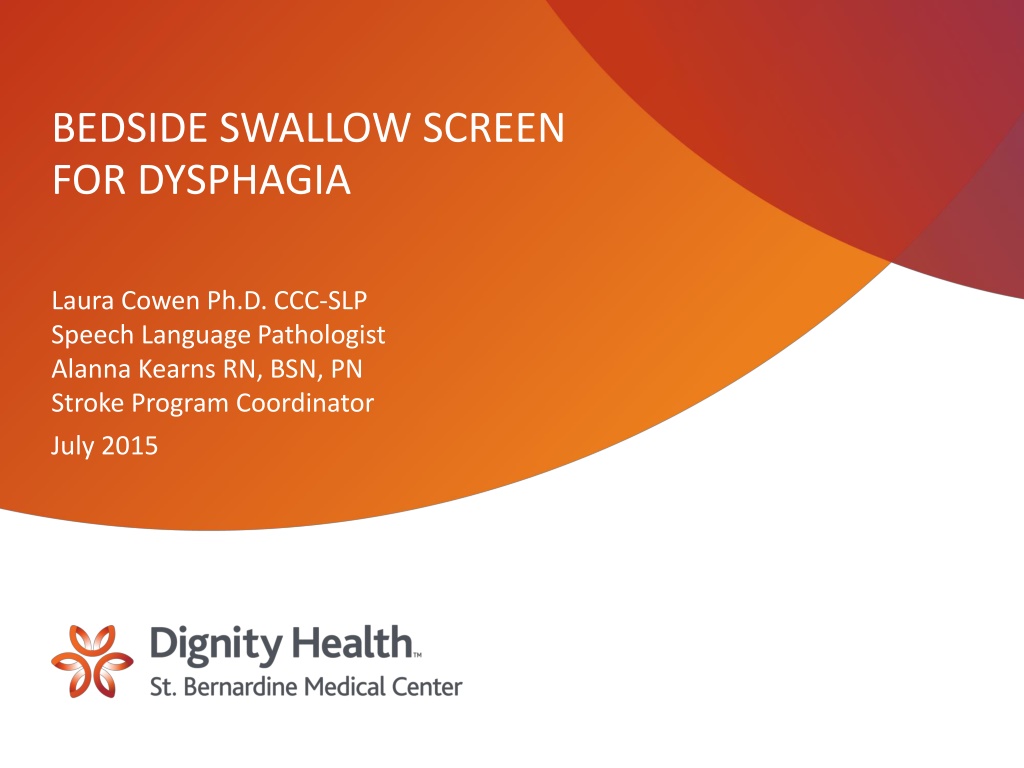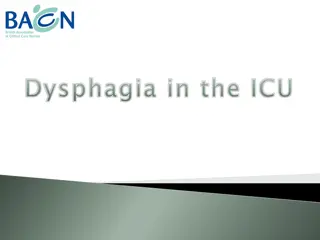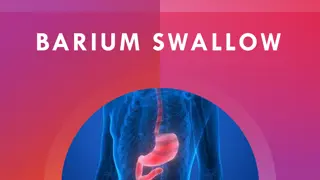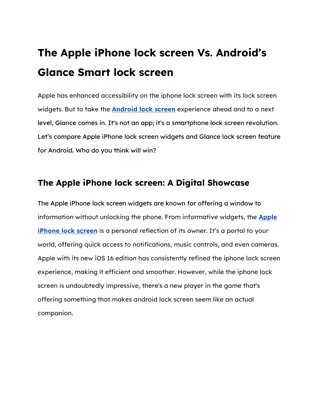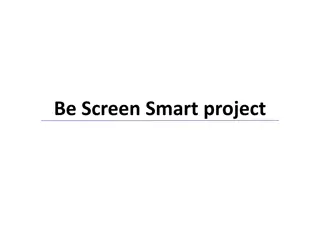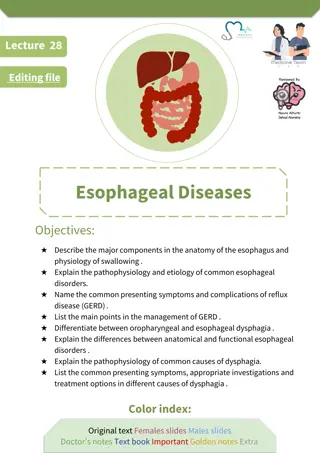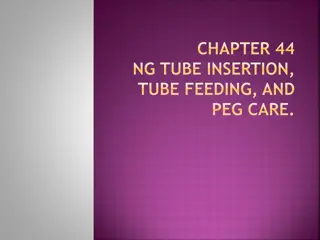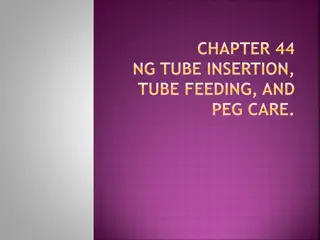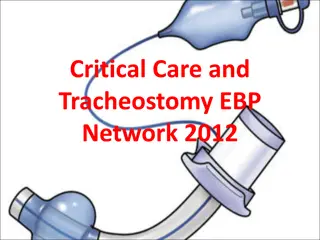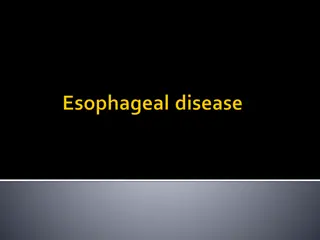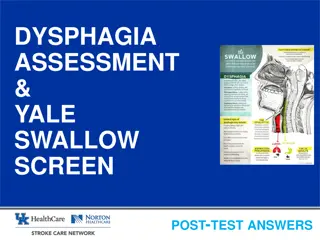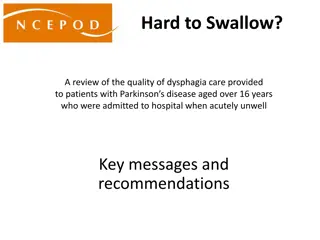BEDSIDE SWALLOW SCREEN FOR DYSPHAGIA
In this guide, learn about the bedside swallow screen for dysphagia, its importance in identifying swallowing difficulties, differences from a swallow evaluation, and procedures involved. Understand why all TIA and stroke patients need a swallow screen, the criteria for screening, and other patients who may require evaluation. Explore the roles of nurses, speech therapists, and the Joint Commission's requirements.
Download Presentation

Please find below an Image/Link to download the presentation.
The content on the website is provided AS IS for your information and personal use only. It may not be sold, licensed, or shared on other websites without obtaining consent from the author.If you encounter any issues during the download, it is possible that the publisher has removed the file from their server.
You are allowed to download the files provided on this website for personal or commercial use, subject to the condition that they are used lawfully. All files are the property of their respective owners.
The content on the website is provided AS IS for your information and personal use only. It may not be sold, licensed, or shared on other websites without obtaining consent from the author.
E N D
Presentation Transcript
BEDSIDE SWALLOW SCREEN FOR DYSPHAGIA Laura Cowen Ph.D. CCC-SLP Speech Language Pathologist Alanna Kearns RN, BSN, PN Stroke Program Coordinator July 2015
Objectives The nurse will be able to identify which patient population requires a swallow screen before eating, drinking, or taking anything by mouth. The nurse will be able to explain the rationale for having oral suction immediately available when doing a bedside swallow screen. The nurse will be able to explain the difference between a swallow screen and a swallow evaluation. The nurse will be able to recognize if the patient has passed the first section of the swallow screen. The nurse will be able to explain how to safely administer a bedside swallow screen. 2
The Joint Commission & SBMCs Requirement All TIA and Stroke patients must have a swallow screen to identify dysphagia before receiving any oral intake for the first time including liquids, food and medications. Use the Swallow Screen for Dysphagia form in Cerner, found in Ad Hoc and click the green checkmark to save. There should be a swallow screen performed on every TIA/stroke patient. An MD order is not required to perform the Swallow Screen for Dysphagia. 3
Swallow Screen vs. Bedside Swallow Evaluation Swallow Screen Bedside Swallow Evaluation Performed Speech Therapist Done only with MD order Performed by RN Done automatically prior to any oral intake Brief Utilizes only water Can take 30-60 minutes Utilizes full trial feed with multiple textures Includes full oral and pharyngeal assessment Basic observation 4
Procedures Performed by a Speech Therapist) Bedside Swallow Evaluation (BSE) Modified Barium Swallow Study (MBSS) Swallow evaluation Video swallow Swallow assessment Swallow study Bedside Videofluoroscopic Swallow study Dysphagia evaluation Barium swallow with video 5
Criteria for a Swallow Screen for Dysphagia All Acute Ischemic Strokes (AIS) All Hemorrhagic Strokes All Transient Ischemic Attacks (TIA) 6
Other patients appropriate for swallow screen Recently extubated patients Head trauma patients Any patient with recent neurological changes Patients with neurodegenerative diseases Patients with dementia Recent cervical surgery patients Patients that you feel are having swallowing difficulties 7
To Do List Note: Only Registered Nurses who have completed this training may perform a Swallow Screen for Dysphagia Only Nurses will perform this screening. Have oral suction immediately available See that the mouth is moist and clean. If not, provide oral care prior to doing the Swallow Screen for Dysphagia Explain procedure to patient Provide privacy Provide patient teaching Document patient s response to Swallow Screen for Dysphagia Save your work 8
RN Swallow Screen Chart this as a Screen not an Evaluation Note that any boxes checked in the top area is an automatic Fail Keep the pt NPO Nothing oral at all A Swallow Evaluation by a Dysphagia Specialist will be automatically ordered if the patient fails this screen 9
The Swallow Screen Current Status, Observations Patient or family may give data Can patient stay awake/follow simple commands? History of recurrent or aspiration pneumonia? Wet sounding voice? Absent, weak or wet cough? Difficulty managing secretions? (drooling or frequent suctioning) Facial droop or slurred speech? Feeding tube? Difficulty swallowing when eating or drinking? 10
NPO except medications All stroke and TIA patients that have orders for NPO except medications will be kept NPO Until successfully passing a swallow screen And having this documented in the electronic medical record 11
Swallow Screen (continued) 1st Oral Trial 1 tablespoon water (15 ml) 2nd Oral Trial 2-3 sips of water from cup (NO straws) (90 ml) Did the water dribble or drool from patient s mouth? Did the patient swallow multiple times? Did the patient cough immediately or within one minute after swallowing? Did the patient s vocal quality become wet or gurgly? 12
Swallow Screen Contraindications or Instant Fail Patient unable to remain alert/awake without repeated stimulation Inability to follow simple oral commands Open mouth, stick out tongue, smile Patient with existing feeding tube Patient with respiratory difficulty, weak or absent cough, or recent history of aspiration pneumonia Patient unable to sit upright at a 90 degree angle Drooling with or without coughing No voice 13
Results of the Screen If ANY of the answers to the questions on the first part of the screen is anything other than None , the patient automatically FAILS the screen and needs to be kept NPO A ST BEDSIDE SWALLOW EVALUATION will be ordered in Cerner. 14
If patient passes SCREEN and begins an oral diet 1. Observe patient for any frequent coughing, throat clearing, choking, breathlessness, or wet/gurgly voice after drinking or eating. 2. Observe patient for oral pocketing of food and leakage of food or liquid from mouth. 3. Monitor aspiration indicators such as worsening lung sounds, elevated temperature and decreasing oxygen saturation. 15
If patient passes SCREEN and begins an oral diet 4. Observe for worsening neurological condition and repeat SCREEN if worsening occurs. 5. Request a Nutrition Consult for inadequate hydration or nutritional intake. 6. Any concerns about swallowing, consult Physician about getting a Bedside Swallow Evaluation by Speech Therapy . 16
Swallow Screen: STK 7 Remember: NO NPO except Medications ! Always check the swallowing! 17
